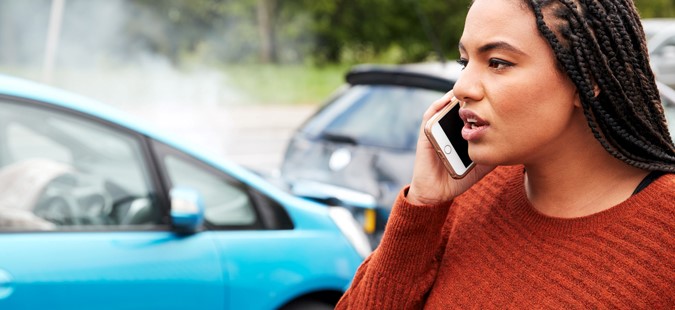
How to Avoid Rear End Collisions
Unfortunately, car accidents happen every day, resulting in varying degrees of injury and vehicle damage. The most commonly seen type of motor vehicle collision in the U.S. is a rear-end collision.
In fact, according to the National Highway Traffic Safety Administration (NHTSA), almost one in three crashes (29 percent) is a rear-end collision. Whether due to driver inattentiveness, reduced visibility, inclement weather, fatigue, or speeding, there are many reasons as to why drivers fail to stop before striking the vehicle in front of them.
Luckily the implementation of crash prevention tools continues to help reduce the number of rear-end collisions that occur. But regardless of technology, there are many measures that each driver should take in order to avoid a rear-end collision.
1) Pay Attention at All Times
Whether texting or talking on the phone, applying makeup, eating, or changing the radio, when you are distracted you will be more likely to miss something that could possibly otherwise be avoided. For instance, if you are paying attention to the road you may notice a vehicle stopped in the middle of the street with its flashers on. By seeing it far enough in advance you can then adjust your vehicle to avoid hitting it.
2) Use Your Turn Signals
Another important tip for avoiding rear-end collisions is to make other drivers around you aware of what your vehicle is about to do. Things such as always using your turn signals and braking gradually over a distance can help inform those around you and therefore prevent a rear-end collision.
3) Follow at a Safe Distance
A major cause of rear-end collisions is when drivers fail to leave enough space between the front of their vehicle and the back of the vehicle in front of them. If the driver in front of you stops suddenly, you need enough room to stop in time before hitting them. You can achieve a safe following distance by using the three-second rule, the recommendation of the National Safety Council. Look at a fixed object next to the vehicle in front of you and count to three. If your vehicle passes that object before you count to three you are too close.
4) Be Prepared for Bad Weather
Inclement weather can commonly contribute to dangerous road conditions. What is safe when the roads are clear may no longer be safe when the weather is bad. Fog, rain, and snow can obstruct your vision, while black ice can create difficulty braking your vehicle. Since it will take your vehicle longer to come to a complete stop in these conditions, you should be sure to leave an even greater following distance between you and the vehicle ahead of you.
The Goss Law Firm Can Help
If you or a loved one has been injured in a car accident of any kind, The Goss Law Firm can help. To learn more or to schedule a FREE consultation, call the Kansas City Lawyers at the Goss Law Firm at 816-839-6452.





